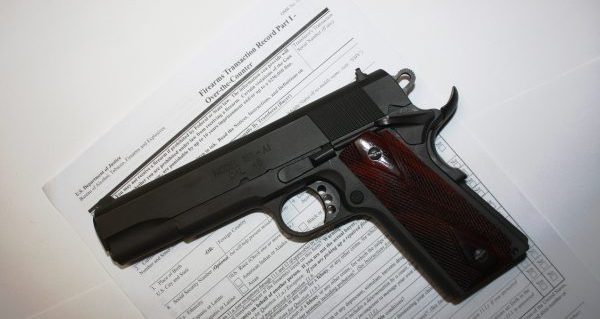
Gun control proponents were just handed a setback by Politifact via newspapers in Tampa Bay and Miami, Florida and it cuts right to the heart of their arguments for so-called “universal background checks.”
For years the gun prohibition lobby has claimed that 40 percent of firearms sales in the United States are conducted without background checks. That claim has already been debunked by the Washington Post Fact Checker. Back in 2013, then-President Barack Obama made that assertion at the time, following the Sandy Hook tragedy. New data sets the old claim on its ear.
Thanks to a trio of researchers identified as Matthew Miller, Lisa Hepburn and Deborah Azrael, it is now estimated that only 22 percent of “gun owners who reported obtaining their most recent firearm within the previous 2 years reported doing so without a background check.”
However, according to a report on the study in Annals of Internal Medicine, of the firearms obtained through private purchases within the two previous years, 50 percent were obtained without a background check. This was determined in a survey of 1,613 adult gun owners. Federal law allows for private sales without such checks unless state law mandates “universal” checks for every firearm transfer.
Politifact contacted gun researcher Philip Cook at Duke University: “When we asked Cook whether the new paper represented the definitive ‘stake in the heart’ for this zombie (40%) statistic, he replied: ‘Exactly’.”
Millions of American adults continue to buy or sell firearms privately with no background checks where they are not required, the story acknowledged. But they’re not doing it at the volume that has been asserted by the gun prohibition lobby for several years.
As the Washington Post Fact Checker noted four years ago, the figure came from a study that was “based on data collected from a survey in 1994, the same year that the Brady Act requirements for background checks came into effect. In fact, the questions concerned purchases dating as far back as 1991, and the Brady Act went into effect in early 1994 – meaning that some, if not many, of the guns were bought in a pre-Brady environment.
“Digging deeper,” the WAPo Fact Checker noted, “we found that the survey sample was just 251 people.” That survey was conducted via telephone, using a random-digit-dial method with a response rate of 50 percent, the newspaper said. It’s such a small sample size that to have 95 percent confidence, there would be a plus/minus variation of six percentage points.
It appears the bottom line here is that Second Amendment activists should continue paying close attention to gun control lobbyists, to determine whether they cling to the 40 percent estimate because it is simply more dramatic, or they change their tune and reduce their figure by almost half.
Related:
Gun Rights Victory: Wisconsin Supremes Rule CCW Okay on Madison Buses
Chicago Citizens Arming Up Against Crime as Murders Continue